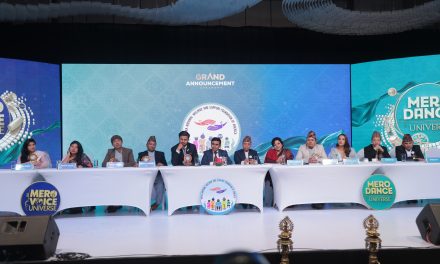– Dr. BP Badal
Dharmachhetre Kuruchhetre, Samabeta Yuyutsaba
Mamaka Pandabaschaiba, Kim Kurbata Sanjaya
(Bhagavad Gita, chapter 1, verse 1)
Nepal is the land of culture and Kathmandu valley is the city of temples. Every day the valley celebrates a festival. It is the city of festivals. It is the land of Dharma and Karma. So it is Dharmachhetra – land of righteousness suddenly turned into a Kuruchhetra-a battlefield. It was lockdown prohibition order since the last five and half months, people were inside the home. Entire business and transportation were closed. There were the fear and agitation among people about the situation and undecided imposition against human right. It was a compulsion for government personnel to follow the order.
On the other hand, culture is the identity of the people. To preserve identity, people take any kind of risk. The important culture having historical relation with India, the central meeting point of Vedism and Buddhism, the lord of peace, prosperity, and justice of farmers, lord of rain, and agriculture – is Machhindranath. People forget the law and order and set out to celebrate the festival and it is necessary to preserve the culture. Police of the federal central government came and started to maintain law and order. The dispute arose high and agitation turned into a war. Nepal is a democratic country having governments in every step from local to central but entire authority is delegated to the central government. The policy of the central government was against the locals. If the authority was given to the local government as a perfect form of democracy, the issue would be solved by the local government at the local level. It is complete de facto democracy at the local level. Thus the Dharmachhetra -land of righteousness turned into Kuruchhetra -battlefield. A clash ensued when the central police tried to stop them from the chariot procession of Rato Machhindranath in the time of prohibition order.
The website of Lalitpur metro city says, the most popular one is the legend of the God Rato Machhindranath, who was brought to the valley from Kamaru Kamachhya, located in Assam, India, by a team of three people representing three kingdoms of the valley. One of them is called Lalit, a farmer who carried God Rato Machhindranath to the valley all the way from Assam, India. The purpose of bringing God Rato Machhindranath to the valley was to overcome the worst drought in the valley. There was a strong belief that God Rato Machhindranath would make rain in the valley. It was Lalit’s effort that the God Rato Machhindranath was settled in Lalitpur. Many believe that the name of the town is kept after his name Lalit and Pur means township in Nepal. Lalitpur is said to have been founded by King Veer Deva in 299 A. D. A typical Newari name of Patan is Yala. It is said that King Yalamber – first Kirant King, named this city after himself and ever since this ancient city was known as Yala. Thus it is the land of Kirant and agriculturists.
The literary meaning of Lalitpur means the city of fine arts. It nurtures a large number of sacred buildings, temples, pagodas, Stupas, and Shikharas, monasteries, math, and Chaitya. Bunga Dyaḥ is also known as Raktalokitesvara Karunamaya and Rato Machhindranath and is revered as the giver of rain. The chariot procession was instituted to celebrate the arrival of Bunga Dyah in Nepal and the end of a devastating drought. It was started when Narendra Deva was the king (640-683 AD). Machhindranath is considered both a Hindu and Buddhist god, who by legend was brought from Assam (India) during the reign of Lichchavi King Narendra Dev, by a farmer to Lalitpur valley in Nepal to prevent from drought during. It is known by various names, like Bungdyo, Karunamya, Arya Avalokiteshwora among the locals.
The longest-running chariot festival in Nepal recreates this event in the hope of good rain and agriculture. It begins with the construction of the 48 feet long chariot without using any nail or iron in Pulchowk, Lalitpur, and ends with the Bhoto Jatra festival in Jawalakhel. The head of state of Nepal every year attends it. It is celebrated by Buddhists and Hindus of the Newar community. It is celebrated by pulling the chariot to different places in the town of Patan.
The clash in Pulchwok is human psychological issue rather than political. The festival is the link of Buddhism, and Vaidism, it is the link of Newar and Non-Newars. It is a symbol of unity and integrity. It is the symbol of peace, progress, and prosperity of common people and states. It links the entire Newari culture where the head of the state worship the living Goddess Kumari. The community especially the Newar of Kathmandu Valley is preserving the identity and culture for our future generation from the months-long procession that none of the other community is doing or preserving like such Jatras and cultural practices. To develop a such a vibrant community, it is almost impossible so it is our duty and responsibility to preserve it. But democratic government used the force to dismantle it rather than motivate and develop the community in such a critical time.
(Dr. Badal teaches community development in central department of rural development of Tribhuvan University)





